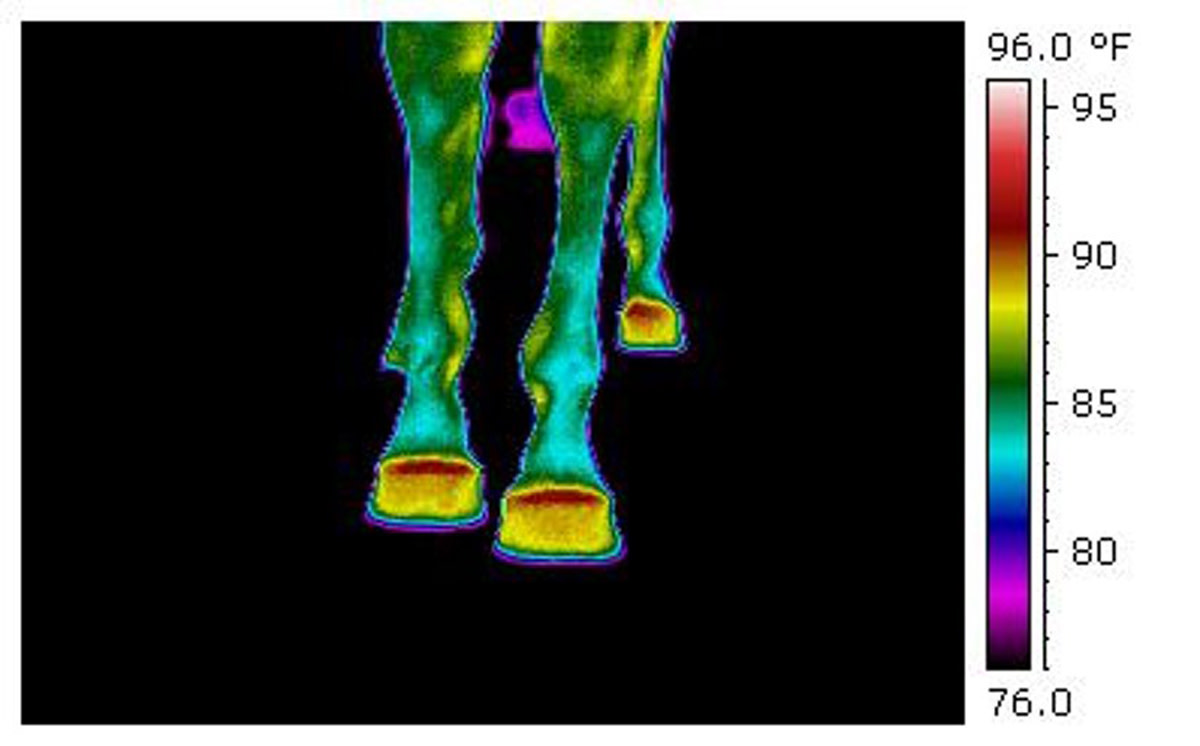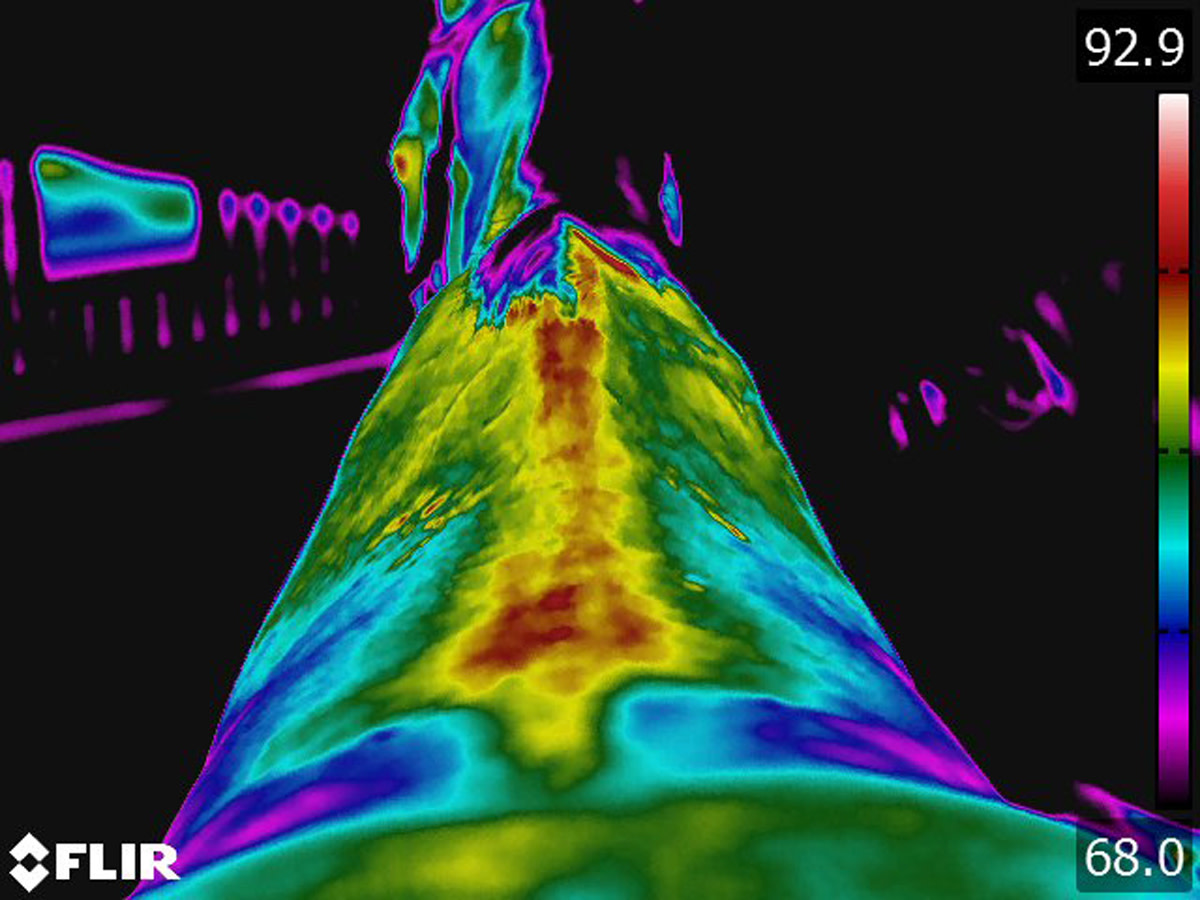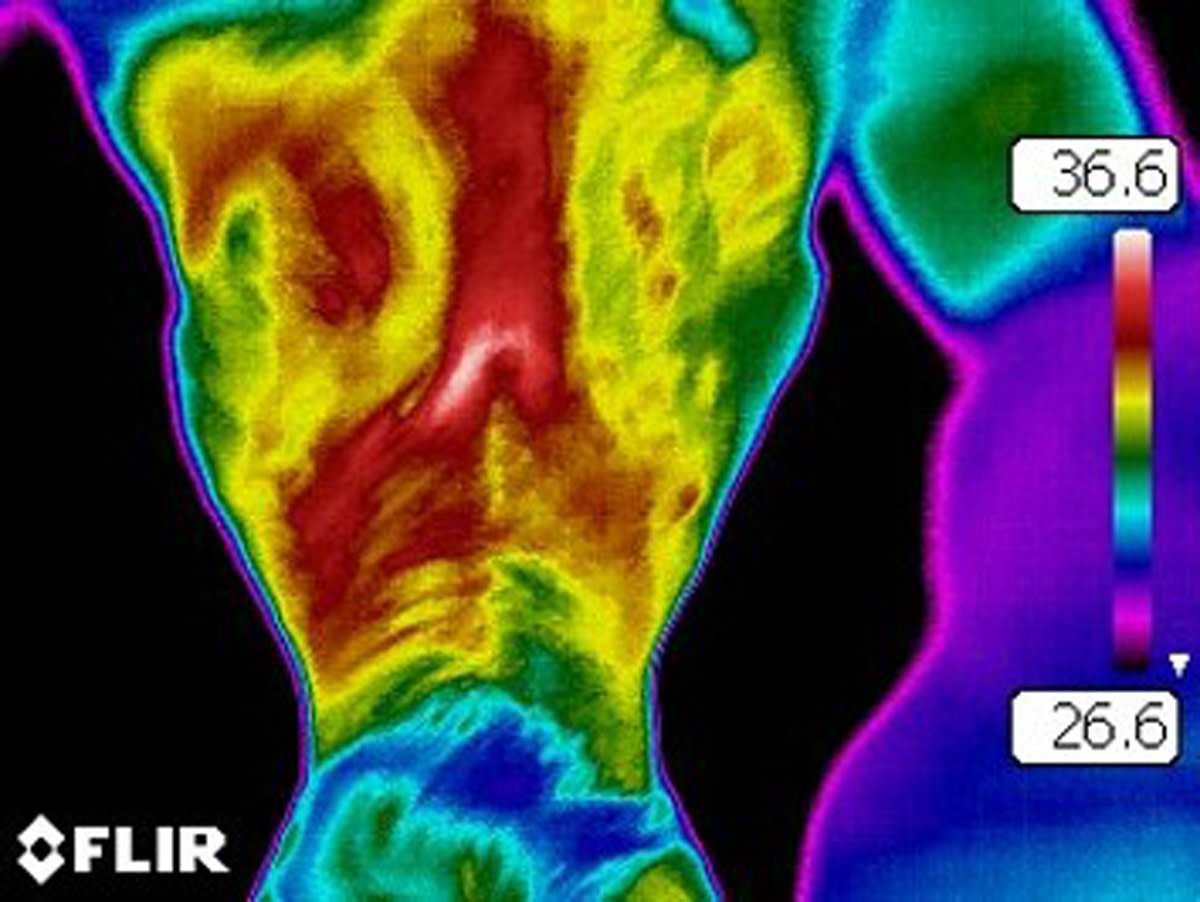
At the Fédération Équestre Internationale (FEI) World Equestrian Games (WEG) Tryon 2018 at the Tryon International Equestrian Center in Mill Spring, North Carolina, there will be several teams of veterinarians who are in charge of the health of the horses as well as enforcing the rules of the event. One of the medical teams will focus on thermography for limb sensitivity testing of jumpers. That team will consist of veterinarians Tracy Turner of the United States and Colin Roberts of England.
Turner got his DVM in 1978 from Colorado State University and completed his surgical residency at Purdue University. He also got his Masters degree from Purdue, where his thesis was: “Thermographic Evaluation of the Equine Lower Limb” 1979-1981. Turner has spoken nationally and internationally on lameness topics and has written more than 100 manuscripts and book chapters. Turner also is Board Certified in Surgery (ACVS), Board Certified in Sports Medicine and Rehabilitation (Equine) and is a Fellow of Thermology (AAT). Turner also is on the EquiManagement Advisory Board.
Roberts received his veterinary degree from the University of Bristol followed by his Fellowship of the Royal College of Veterinary Surgeons. He RCVS is a Recognized Specialist in Equine Internal Medicine and has his PhD. Roberts is the Director of Studies in Veterinary Medicine at Sidney Sussex College. He is a member of the Fédération Équestre Internationale’s (FEI) Veterinary Committee and an FEI Official Veterinarian. Colin is a member of the Scientific Advisory Group of the British Equestrian Federation. In 2012, he became a Fellow of the Society of Biology. Roberts was head the equine drug testing unit at the London Olympics in 2012 and Rio in 2016.

Questions About Thermography at WEG
EquiManagement asked Turner several questions about the use of thermography at WEG Tryon 2018. Following are the questions and answers.
Why are show jumpers subjected to this special FEI testing?
“Thermography is part of the testing protocol for Limb Sensitivity,” explained Turner. “This is a welfare test for examining the limbs of show jumpers to ensure that their limbs have normal sensation in order to compete.”

Why is this limb sensitivity testing so important?
In the 2008 Olympics, multiple horses were suspended from competition due to findings of capsaicin, which, according to the FEI, was then classified as “a ‘doping prohibited substance’given its hypersensitizing properties, and as a ‘medication class A’ prohibited substance for its pain-relieving properties.”
The FEI decided it needed to focus more on limb sensitivity, thus the use of manual inspection and thermography to inspect horses’ limbs.
Those who follow FEI competitions might remember that at the 2012 London Olympics, Victor, part of the Canadian show jumping team and ridden by Tiffany Foster, failed a sensitivity test on a small area above a hoof and was disqualified from the Olympics.
Here’s what the FEI stated on their website about that event: “The Canadian horse Victor, ridden by Tiffany Foster, has been disqualified under the FEI’s hypersensitivity protocol due to an area of clear and obvious hypersensitivity on the front of the left forelimb.
“The Veterinary Commission stated that the horse had an area of inflammation and sensitivity on the left forelimb just above the hoof. There was no accusation of malpractice, but the horse was deemed unfit to compete by the Ground Jury and was disqualified from the Second Qualifier of the Jumping competition at the Olympic Games this morning.
“A protest lodged by the Canadian chef d’equipe was heard by the FEI Appeal Committee before the end of the competition in order to facilitate the athlete taking part in the competition if the protest was successful. However, the protest was denied based on 2012 Annex XI (now articles 1048 – 1053) of theFEI Veterinary Regulations, which stated: “There is no appeal against the decision of the Ground Jury to disqualify a horse for abnormal sensitivity from an Event”. The FEI General Regulations also clearly state that there is no appeal against an elimination of a horse for veterinary reasons. The horse Victor, ridden by Tiffany Foster, will take no further part in the equestrian events at London 2012.”
But that wasn’t the first time that a horse had been eliminated from an FEI event due to limb sensitivity. In 2010, Sapphire, the horse ridden by USA’s McLain Ward, was disqualified from the World Cup final when his horse was in the lead.
Here’s what the FEI posted on their website about this on April 16, 2010: “Sapphire, the horse ridden by McLain Ward (USA), has been eliminated from the second round of the FEI World Cup Final last night (16 April) and disqualified from the rest of the event following a positive hypersensitivity test. The horse was selected for thermography testing on its legs yesterday and US Team Vet Dr. Tim Ober was notified in the late afternoon that the horse would be tested at 7.30pm (CEST).
“The test involved the use of a thermography camera and a clinical examination of the legs, which was carried out by FEI appointed veterinarian Dr. Paul Farrington and Dr. Emile Welling, the Foreign Veterinary Delegate. Following the examination, Dr. Farrington informed Dr. Ober and the two grooms that were present at the test that the horse was showing sensitivity in its left foreleg but that it was fit to compete at that time.
“McLain Ward and Sapphire went on to finish second in the class to take over the lead in the overall standings, but the FEI made a decision to re-examine the horse post-competition, using both thermography and clinical examination. The second test was carried out at 12.30am on Saturday, 17 April in the presence of the President of the Ground Jury, Rene Billardon (FRA), Dr. Ober, the two grooms and Lizzie Chesson from the United States Equestrian Federation (USEF). Dr. Paul Farrington, Foreign Veterinary Delegate Dr. Emile Welling (BEL) and Dr. Markus Mueller (SUI) each re-examined the horse and declared that, due to the level of hypersensitivity, it was unfit to take any further part in the competition.
“The FEI Foreign Veterinary Delegate Dr. Welling immediately informed the President of the Ground Jury, who notified the rider (the Person Responsible) that the horse was eliminated from the competition and disqualified from the rest of the event. Dr. Farrington stressed that there was no indication or evidence of any malpractice by McLain Ward or any member of the team.
“Under the FEI General Regulations (Art. 159.6.2, 159.6.4), there is no appeal against the decision of the Ground Jury to eliminate or disqualify a horse from an event for abnormal sensitivity.”
More on FEI World Equestrian Games™ Tryon 2018 Exams
Turner said the initial examination of a show jumper is thermography and palpation by FEI veterinarians and a member of the ground jury with FEI steward help. He said they would be looking for horses that show pain on palpation and show evidence of inflammation.
Since thermography is often used for sport horses to detect problem areas and there will be thermography units at WEG with skilled practitioners manning them, will the thermography scanning services be available to teams and veterinarians during the event?
Turner said if it is requested by a treating veterinarian, “we can examine horses as long as it does not interfere with official duties.”

What Is Thermography?
Thermography is a “physiologic imaging” modality that detects heat that emitted from the horse’s body (or any living creature’s body) in the form of infrared radiation. Thermography is used to measure local circulation and metabolism as well as blood flow.
“Thermal patterns” are dictated by circulatory patterns and local vascularity. Those are changed by the surface contour of the body part being scanned using thermography. There also are environmental influences to thermography exams.
The “heat” of thermal patterns shows up as a scale, colors depend upon the palette that is chosen. The palette most common recommended for veterinary use is a rainbow high contrast, where red is the hottest, while “cool” thermal areas show up as dark blue. There is a wide variety of colors in between, so it takes a skilled and experienced thermographer to not only use the equipment properly, but to interpret the findings.
Turner noted that thermography can enhance a clinical examination through the following means:
- Qualitative assessment of the vasculature and blood flow to the tissues;
- It detects heat where it was not detected on palpation; and
- It detects “abnormal” areas of thermal anatomy (autonomic nervous system).
Turner explained thermography this way in an AAEP article: “Thermography is the pictorial representation of the surface temperature of an object. It is a non-invasive technique that measures emitted heat. A medical thermogram represents the surface temperatures of skin, making thermography useful for the detection of inflammation. Although thermographic images measure only skin temperature, they also reflect alterations in the circulation of deeper tissues. This ability to assess inflammatory change non-invasively makes thermography an ideal imaging tool to aid in the diagnosis of certain lameness conditions in the horse.”
Take-Home Message
Jumpers at the FEI WEG Tryon 2018 will be subjected to limb sensitivity testing during the event. Thermography plays a supportive role in this testing procedure.
Competitions Outside FEI World Equestrian Games™ Tryon 2018
Thermography also has been used for possible rule violations in less-conspicuous equine events. Far away from the FEI and Olympic-level competitors, the USDA looked to thermography in trying to uphold the Horse Protection Act that prohibits “soring” of horses in competitions, most often Tennessee Walking Horses.

Turner provided information about thermography and its use in horse soring, quoting this research:
- 1975 Nelson, Detection of Soring in Tennessee Walking Horses
- 1978 report in JAVMA: Thermographic Enforcement of the Horse Protection Act
- 1978-1982 Purohit, Auburn University: Thermography in Diagnosis of Inflammatory Processes in Horses in Response to Various Chemical and Physical Factors
Click here for complete health and veterinary aspects of #Tryon2018. Coverage of the FEI World Equestrian Games™ Tryon 2018 is brought to you by KindredBio.


![[Aggregator] Downloaded image for imported item #18391](https://s3.amazonaws.com/wp-s3-equimanagement.com/wp-content/uploads/2025/09/30141438/EDCC-Unbranded-5-scaled-1-768x512.jpeg)

